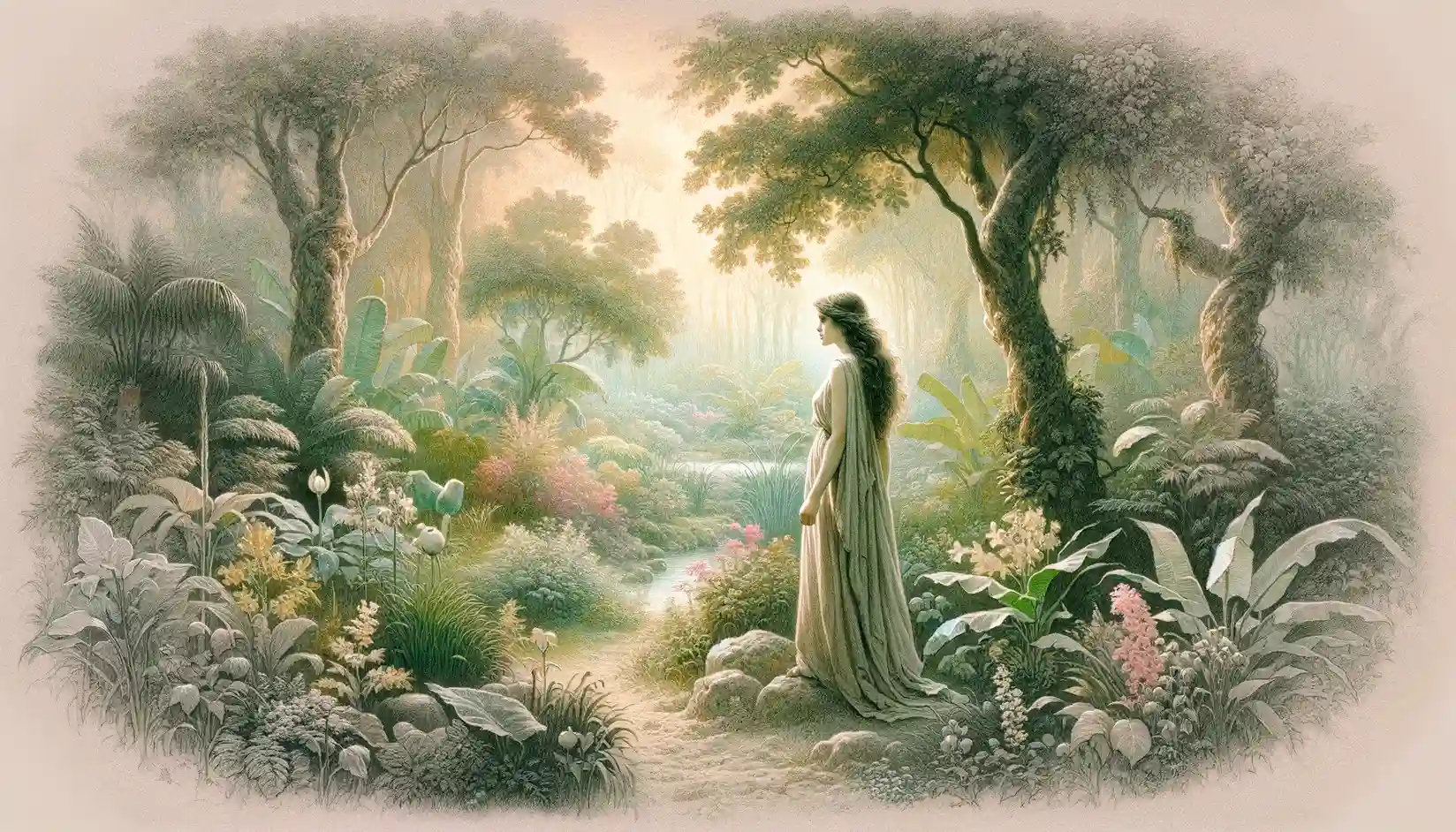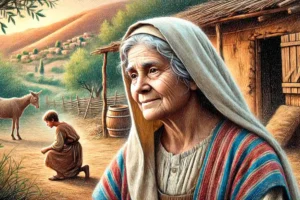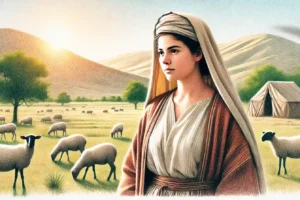
Eve: The first woman, created from Adam
Eve, known as the first woman according to the Bible, plays a foundational role in the story of humanity. Created from Adam’s rib, she is central to the Genesis narrative.
Quick Facts:
- Creation: Eve was created by God from Adam’s rib, making her the second human but the first woman, as described in Genesis 2:21-22.
- Garden of Eden: Eve lived with Adam in the Garden of Eden where they were allowed to eat from every tree except the tree of the knowledge of good and evil.
- The Fall: Eve is notably involved in the pivotal moment known as “The Fall,” where she is tempted by the serpent to eat the forbidden fruit, leading to sin entering the world.
- Mother of All Living: After the fall, Eve is named by Adam as “the mother of all living” (Genesis 3:20), signifying her role as the progenitor of the human race.
- Symbolic Representation: Eve represents themes of temptation, sin, and redemption, playing a crucial role in the theological explanation of sin and human nature.
Contextual Background: Eve, as presented in the book of Genesis, emerges as a pivotal figure in the Judaic, Christian, and Islamic traditions. She is the first woman, created by God as a companion for Adam, the first man. Her creation is described as being from Adam’s rib, symbolizing her integral role as a “helper” and companion. Eve’s narrative is centrally located in the Garden of Eden, a place of initial peace and perfection.
Theological and Character Insights:
- Role in Creation: Eve’s creation from Adam’s rib (Genesis 2:21-22) is rich in symbolic meaning. It suggests a partnership, with Eve being an integral part of humanity, sharing the same essence as Adam. This creation method highlights the deep interconnectedness between male and female in human relationships.
- The Fall: Eve’s interaction with the serpent (Genesis 3) leads to the event commonly referred to as “The Fall.” Here, Eve makes the decision to eat from the tree of the knowledge of good and evil, directly contravening God’s command. This act, followed by Adam’s participation, introduces sin into the world. Theologically, this narrative addresses themes of temptation, free will, and the consequences of disobedience.
- Consequences and Redemption: The consequences of Eve’s actions are profound, affecting all of creation. These include the expulsion from Eden, the introduction of pain in childbirth, and the strain in human relationships (Genesis 3:16-19). Despite these consequences, Eve’s story is also seen as the beginning of God’s plan for redemption. Her title as “the mother of all living” (Genesis 3:20) signifies hope and the continuation of life, setting the stage for future redemption narratives in biblical theology.
- Symbolism and Legacy: Eve often symbolizes the complexities of human nature, embodying innocence, curiosity, disobedience, and resilience. Her legacy is crucial in understanding biblical themes of sin and redemption. Throughout Christian history, Eve has been contrasted with Mary, the mother of Jesus, who is often referred to as the “new Eve” due to her role in the redemption story.
- Impact on Gender Theology: Eve’s narrative has significantly influenced perceptions of gender roles within many religious traditions. Her story has been interpreted in various ways, sometimes being used to discuss and dictate the roles and behaviors appropriate for women. However, contemporary theology increasingly examines her role more equitably and emphasizes her significance in the human story without negative stereotypes.
Conclusion: Eve’s narrative is foundational not only to the story of humanity’s beginnings but also to the broader theological discussions regarding human nature, sin, and redemption. As the first woman, Eve’s decisions and their repercussions set the stage for themes that resonate throughout the Bible and religious thought. Her role invites deep reflection on obedience, free will, and the inherent dignity and responsibility of humanity.



